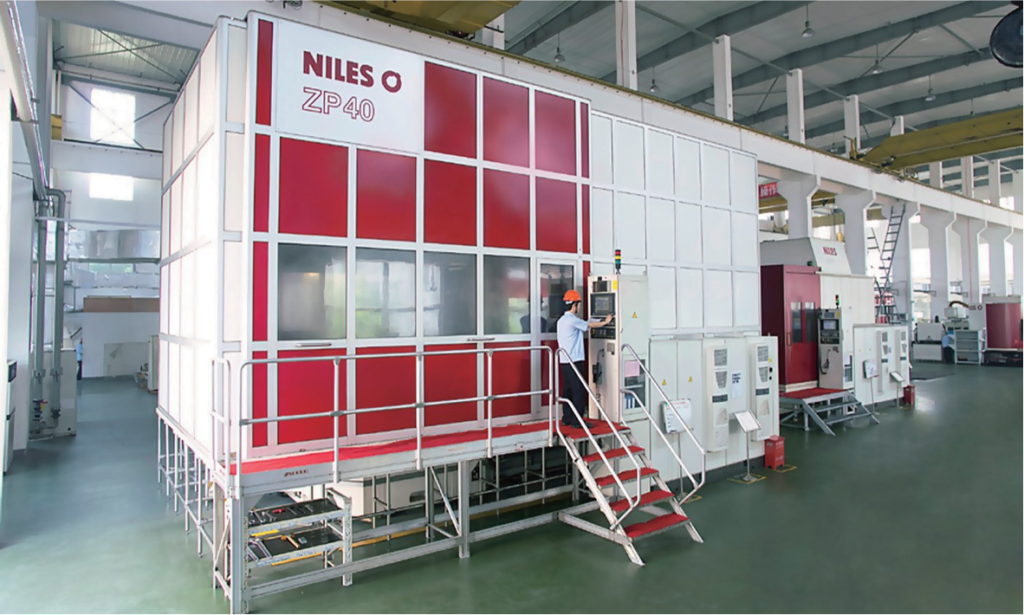In gear tooth grinding processes, controlling the amount of material to be removed, known as the stock allowance, is a crucial aspect. The stock allowance directly influences the machining accuracy and performance of the gear. To effectively control the stock allowance, a series of technical measures and operational standards need to be implemented.
Here are some key points regarding stock allowance control:
1. Size of the allowance: The stock allowance for gear grinding should be as small as possible while still being sufficient to remove all substandard surface layers, including distortion layers from heat treatment and errors left from previous processes. This not only improves production efficiency but also ensures the load-bearing capacity of the gear.
Generally, the unilateral stock allowance for gear grinding should not exceed 0.2mm to ensure the accuracy of the ground gear.
2. Uniformity of the allowance: To ensure uniformity in the gear grinding process and consistency in the final product, the stock allowance needs to be as uniform as possible in the circumferential, tooth profile, and tooth width directions, avoiding residual “black skin” phenomena. This requires strict control of errors during the pre-cutting process. For example, since pre-cutting and grinding do not use the same machining reference, it’s necessary to limit the tooth profile runout during pre-cutting to avoid inconsistent stock allowances during grinding.
3. Form of the allowance: There are typically two common forms of stock allowance in gear grinding. One involves leaving grinding allowances on the tooth surface and gear roots, which helps improve the bending strength of gear roots and eliminate stress concentration at the gear roots. The other form involves uniformly leaving grinding allowances on the gear tooth surfaces without leaving grinding allowances on the gear roots, such as having a certain amount of root relief during previous gear hobbing.
The choice of form depends on the gear’s specifications, structural form, and material, gear blank accuracy (including pre-grinding gear reference accuracy and tooth accuracy), heat treatment deformation, and grinding equipment.
4. Deformation from heat treatment: Since gears undergo deformation after heat treatment, with accuracy typically decreasing by 1 to 2 grades, the size of the stock allowance should be determined by the maximum deformation of the gear after heat treatment. During heat treatment, protective measures can be taken to reduce deformation and ensure machining accuracy.
5. Accuracy and roughness: Gear grinding accuracy generally reaches level 6 or higher, with roughness reaching Ra0.8 or higher. When determining the stock allowance, it’s essential to consider whether the gear grinding process can meet these technical requirements.
6. Equipment control accuracy: The alignment and allocation accuracy of gear grinding machines, synchronization control accuracy between the tool and workpiece, machine tool repeatability, geometric accuracy, etc., largely determine the accuracy of gear machining. Therefore, equipment accuracy and maintenance are also crucial factors in stock allowance control.
7. Production efficiency: While ensuring gear grinding accuracy and surface quality, efforts should be made to maximize productivity. This involves the rational selection of gear grinding parameters and optimization of the process flow.
In summary, controlling the stock allowance in gear grinding is a process that requires consideration of multiple factors, including technical requirements of the gear, quality of previous processes, the influence of heat treatment deformation, and improving production efficiency. By precisely controlling the stock allowance, gear accuracy and performance can be ensured, meeting design and usage standards.
Thank you for reading. Looking forward to serving you with our exceptional gear solutions. #BeyondGears
Read More:


